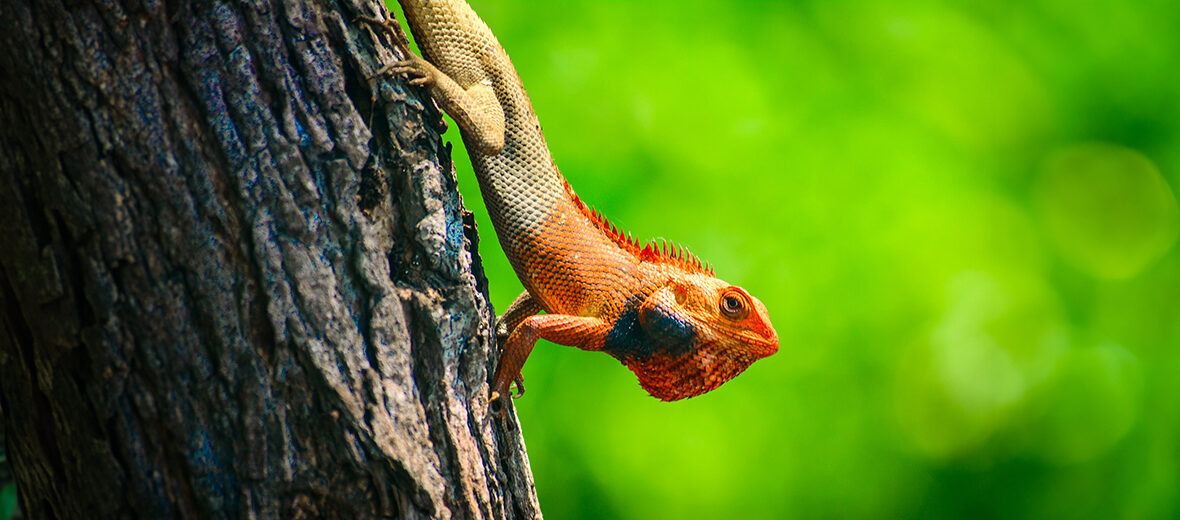
The Oriental garden lizard, aka bloodsucker, changeable lizard, common garden lizard, eastern garden lizard, or Indian garden lizard, hails from southeast Asia. These lizards are a common site but are threatened by overcollection for the pet trade, for food, and for Chinese traditional medicine. They are also preyed on by cats and dogs. However, they are abundant throughout their ranges and have a stable population, thus they are listed as Least concern by the IUCN.
First the Stats…
Scientific name: Calotes versicolor
Weight: Up to .25+ ounce
Length: Up to 3.9 inches, plus up to a 14.5 inch tail
Lifespan: Up to 5 years
Now on to the Facts!
1.) They are known for their bright red throat during mating season.
2.) These lizards escape predation by bolting to the nearest tree.
3.) If approached even closer by a predator, they will move the the blind side of the tree and scale said tree with great speed. When the predator finally moves to the opposite side of the tree, the garden lizard is far out of reach.
4.) Both males and females possess a crest that runs nearly the entire length of their body, from the back of their head to near the base of their tail, hence their other common name of crested tree lizard.
5.) Unlike many other lizards, they are incapable of caudal autonomy (cannot drop their tail).
But wait, there’s more on the Oriental garden lizard!
6.) Just like chameleons, these critters can move their eyes independently of one another.
7.) Females lay up to 20 leathery eggs each season.
Did you know…?
After heavy rains, they are known to gather on the ground to eat insect larvae that falls from the trees.
8.) Eggs hatch in up to 7 weeks.
9.) Ants, crickets, grasshoppers, newborn mice, other small lizards including common house geckos and day geckos are all on the menu.
10.) Since their teeth are meant for gripping, not tearing, they will grab their prey and vigorously shake it to stun it. Then they will swallow it whole.
Now a Short Oriental Garden Lizard Video!
Be sure to share & comment below! Also, check out the Critter Science YouTube channel. Videos added regularly!
Want to suggest a critter for me to write about? Let me know here.
Some source material acquired from: Wikipedia & IUCN
Photo credit: Wikimedia Commons




